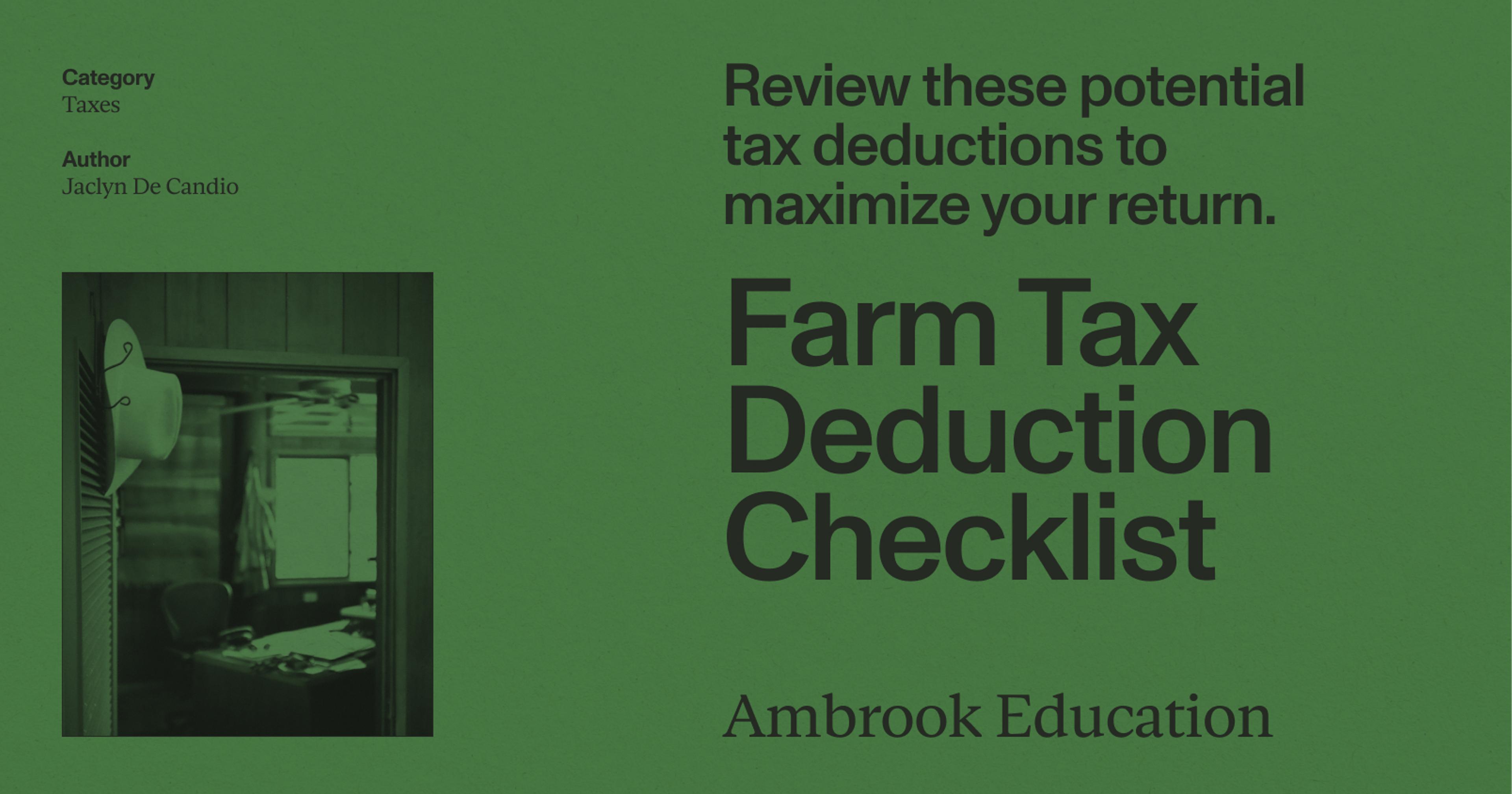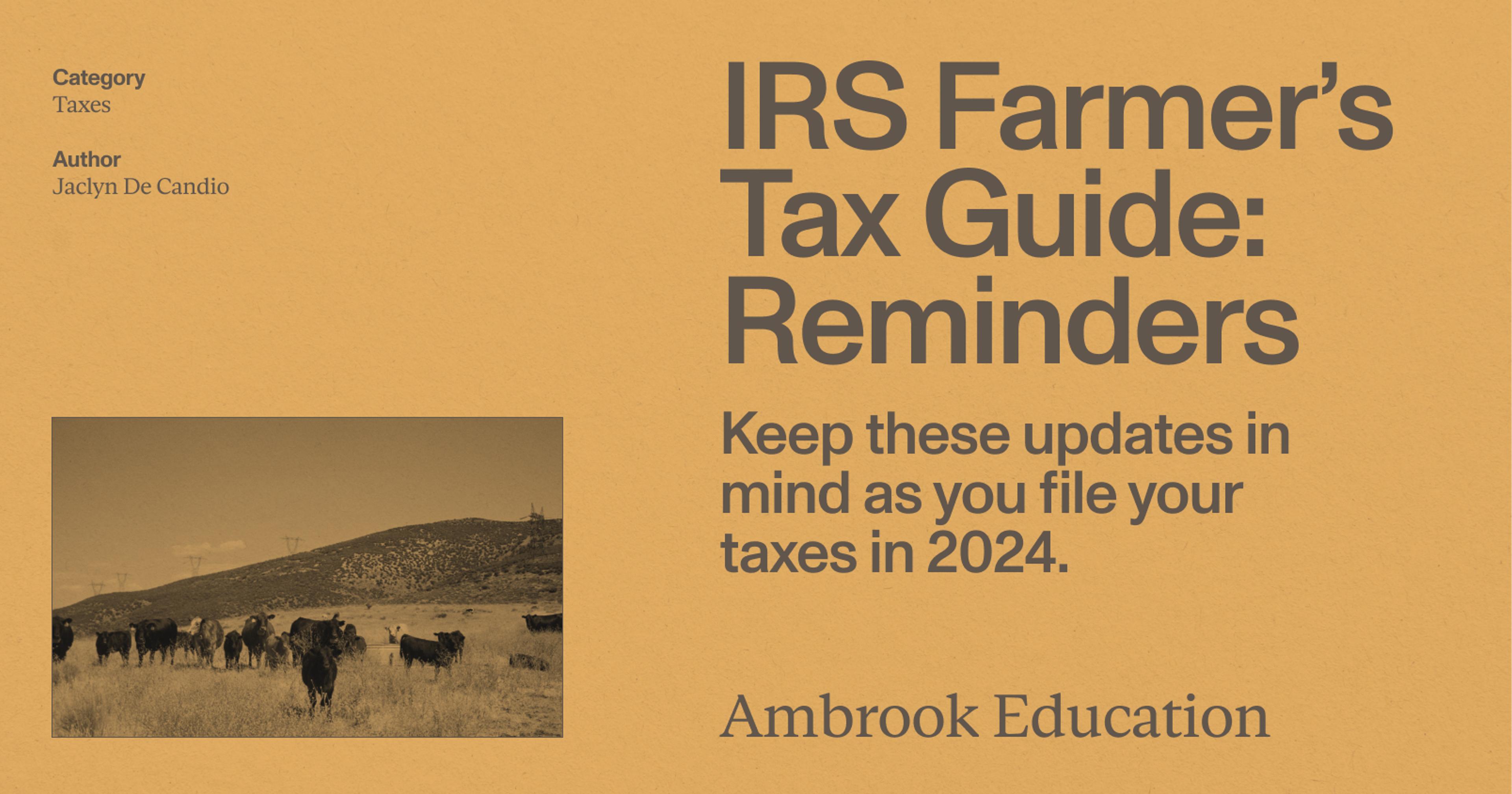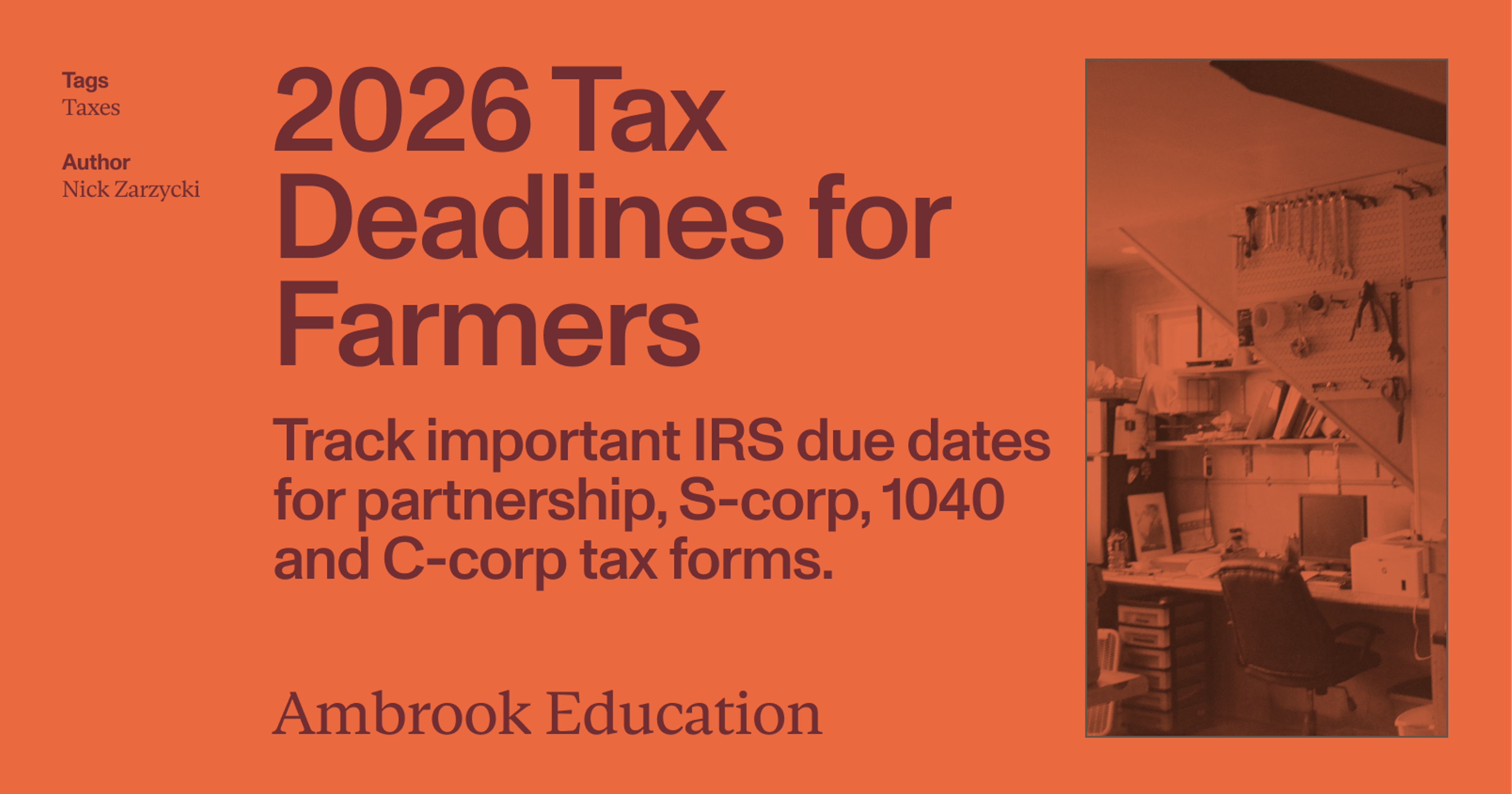Review these potential tax deductions to maximize your return
If there is any excitement to be found in the tax filing process, it’s tallying up your rightfully-earned farm tax deductions. Luckily for farmers, there are lots of deductions available to help you run the business and relieve tax burdens. But like all other filing-related tasks, finding them and making sure they are accurate requires legwork in advance.
Whether you are doing a routine lookover or preparing your annual filing, there’s merit in becoming familiar with what farm tax deductions are available, how they work, and what you need to show to earn them.
And make no mistake – the complexities of farm tax deductions can be challenging and, at times, frustrating. But with advanced preparation and a methodical approach, it’s manageable for the layman.
This checklist will guide you through some key steps to ensure you’re claiming all the farm tax deductions that you are entitled to receive.
✓ Be proactive tracking farm tax deductions
Getting your correct tax deductions all starts with good farm accounting and keeping accurate books. In the eyes of the Internal Revenue Service (IRS), for an expense to be tax deductible, it must be among “the ordinary and necessary costs of operating a farm for profit.”
Legally speaking, “ordinary” expenses are considered to be what the majority of farmers do and “necessary” are useful and helpful for farming purposes.
To make your deductions easier to track down, our Tax Deductions for Farmers guide divides them into four categories based on where you’re most likely to find them—the farm shop, the field, the personnel and the office:
Part 1: Vehicles, Equipment, Repairs and Maintenance
Part 2: Supplies, Fertilizer, Feed and Goods Purchased for Resale
Part 3: Wages, Benefits, Business Travel and Meals
Part 4: Overhead, Fees, Taxes, Office Expenses and Utilities
If you’re ever in doubt about a specific deduction, the IRS Publication 225: The Farmer’s Tax Guide is your gold standard reference with a detailed (though not all-inclusive) list of deductible expenses for farm taxes.
✓ Narrow down your most common tax deductions
All typical expenses are itemized and reported on Schedule F (Form 1040). Because this will likely take up the biggest portion of your deductible expenses, give this form the time and attention it deserves.
Farm operating expenses: These are your big ticket things like seed, feed, and fertilizer. This category is essentially the immediate costs you incur to make a business.
Labor costs: Include direct wages paid to yourself and employees, including family members, as well as payroll taxes.
Equipment repairs and maintenance: Ensure these are specifically for farm use or directly related to farm business operations.
Interest on farm loans: Deduct interest from various types of business loans and lines of credit used for your farm.
Property Taxes: Deduct property taxes on farmland and buildings.
Depreciation: Include depreciation for farm equipment and buildings.
If you use a farm-specific accounting software, these expenses are likely already categorized appropriately.
Finally, if you are in doubt about how to itemize a particular expense or want to see if it’s deductible at all, ask your accountant or a financial consultant familiar with farm taxes. Likewise, you’ll want to ensure you have proper documentation for these expenses, such as purchase receipts, bank notes, and registrations for vehicles used for business.
✓ Take stock of special cases
Beyond the typical costs of running a farm business, there are some other expenses that can be deducted but may need to be put on different forms, such as Form 4797, which is used for “Sales of Business Property” like breeding and dairy livestock.
Examples of non-typical, but still deductible, expenses include:
Rent and leasing costs for land, equipment, or facilities used for your farm business
Utilities like electricity, water, and fuel for farm operations
Insurance premiums for farm equipment, buildings, and crops
Travel expenses incurred for legitimate farm business purposes (with limitations)
Miscellaneous expenses like office supplies, professional fees, and soil and water conservation costs
Remember, not all on-farm expenses are deductible. Typically, this includes general living expenses not related to the farm, costs associated with personal animals, and the value of personal labor and unpaid family labor, among others. IRS Publication 225 covers these in detail, so it’s good practice to become familiar with it.
✓ Review your farm’s books
Maintaining a clear and well-organized recordkeeping system is essential for defending your deductions. You will want to take stock of information such as profit and loss statements, invoices, receipts, and bank statements.
An important footnote here is to ensure you consolidate all your paper and digital materials. You likely have a strong preference for maintaining physical or computer records, but it isn’t unusual for farm finances to use both physical and digital receipts and invoices.
If e-filing, you will need to scan and upload all your physical materials and keep them properly organized and named correctly. Likewise, if you are mailing the old fashioned way, you will need to print hard copies.
On that note, going through books can be numbing and it’s easy to become blind to errors or mistakes. Having another qualified set of eyes, such as a trusted confidant in the business or another family member review before sending to your accountant or filing is very helpful.
✓ Itemize your deductions on Schedule F
Your Schedule F is going to be the home for all income and expenses related to your farm taxes. If your books have been organized in advance, this next step will be easy; you’ll just have to double check and make sure the expenses are appropriately recorded and categorized correctly.
You’ll need to match up your chart of accounts to the categories given on the Schedule F such as feed, seed, labor, equipment, utilities, etc. This will help streamline the itemizing process.
Most of your income will also go here, including livestock sales, produce, grains, and other products.
✓ Double check your farm accounting before moving down the line
You always want to maintain thorough and organized records in case of an IRS audit. Clear documentation and organized books will demonstrate your compliance and make the audit process smoother.
Even if you’ve thoroughly reviewed all entries for accuracy and completeness, you will need to recheck everything after a visit to your accountant. Ensure each expense is properly categorized and the accompanying necessary forms are filled out correctly. Farm accounting software like Ambrook can make this easier.
Farming is an expensive line of work, and tax deductions are a major help to offset some of those significant costs of doing business. But you can only report them with proper documentation and appropriate categorization.
Once you understand the basics of how deductions work and how you can benefit from them, you can position your farm for continued success and financial stability. Happy filing!
This resource is provided for general informational purposes only. It does not constitute professional tax, legal, or accounting advice. The information may not apply to your specific situation. Please consult with a qualified tax professional regarding your individual circumstances before making any tax-related decisions.






